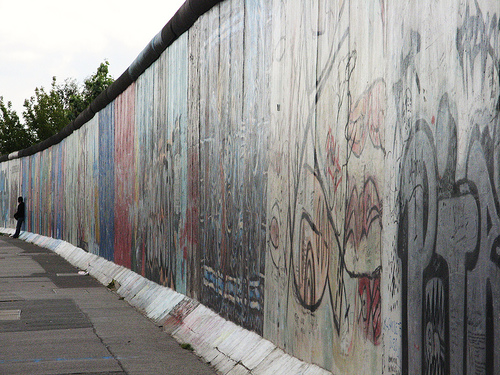 This is a guest post I wrote for the Case Foundation blog and was published on the day of the StartSomeGood launch (in their offices):
This is a guest post I wrote for the Case Foundation blog and was published on the day of the StartSomeGood launch (in their offices):
Clay Shirky is fond of saying that when it comes to online communications “more is different.” Similarly, when it comes to philanthropy, less is different.
The last half-decade has given rise to many incredibly exciting advances in the area of online giving and community building. Causes has allowed us to give to organizations right from inside Facebook. Razoo, First Giving, Citizen Effect and the like made it possible to create personal fundraising campaigns for causes we care about. Kiva made microfinance something we could all participate in, and Global Giving connects us to development projects around the world.
These platforms, along with similar trends in political giving most famously leveraged by the Obama for President campaign, have created an explosion of a new type of philanthropy: mircro-philanthropy. But we will never fully realize the transformational potential of both the new technologies and behaviors behind micro-philanthropy if it continues to be locked up in walled gardens with only American 501c3 organizations given access.
My colleagues and I at StartSomeGood.com are changing this dynamic. We believe that the “nonprofit sector” is less important than the “social good sector”, that great world-changing ideas can come from anywhere and that socially-minded for-profits can be as effective at bringing about change as traditional non-profits.
We know that important work is being done by unincorporated groups and social change freeagents. We want to break down the silos that say only a specific type of incorporated institution in one country on earth is given access to sophisticated online fundraising tools. We want to dispel the myth that tax-deductability is an important driver of giving behavior because, truth be told, below a certain threshold it simply isn’t.
What are important drivers of giving behavior? Great stories, inspiring visions for a better world, a personal connection to an issue and relationships with people affected or involved are just some of the elements we know inspire people to contribute to a social good initiative. These elements are powerful, irrespective of tax status. More important, by far, are the ideas, inspiration and credibility of the entrepreneur doing the asking.
There is no shortage of challenges confronting our communities and our world, but within each obstacle lies an opportunity. An opportunity to rise up to meet those challenges head on, fostering new changemakers and more resilient communities in the process. We do not have an ideas shortage. Rather, we face an implementation shortage, caused in part by the walls we have built around the fundraising process - defining too narrowly where these opportunities should originate and why people would choose to support them. These walls have led to less change, less opportunity and less difference.
StartSomeGood.com is breaking down these walls, and I hope you will join us.
Photo by JMC Photos on flickr, made available on a creative commons license.

